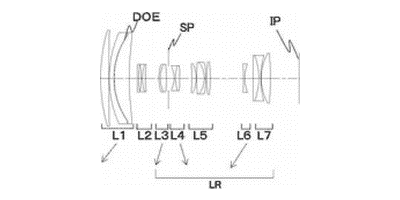Featured Products
Canon has patented an interesting lens for EOS M-series mirrorless cameras. The product consists of an EF-M 50-300mm f/4.5-5.6 zoom lens with a diffractive optical element.
Plenty of lenses have been patented since the beginning of 2016. There is always room for more and, once again, Canon is the company in the spotlight. The Japanese manufacturer has just patented a versatile zoom lens for mirrorless cameras users.
If everything goes well, then EOS M owners will be able to get their hands on a Canon EF-M 50-300mm f/4.5-5.6 DO STM lens at some point in the future. Nevertheless, it appears that a similar optic has also been patented for EF-S-mount DSLR cameras.
Canon EF-M 50-300mm f/4.5-5.6 DO STM lens patent revealed online
The rumor mill has made a lot of promises regarding Canon’s mirrorless line-up. We are expecting to see new lenses by the end of 2016 along with a new mirrorless camera, that will likely replace the EOS M3, as the EOS M10 will remain a lower-end model. Additionally, a higher-end shooter will probably show up sometime in 2017 and it might even have a full-frame image sensor.
One of the lenses may well be the Canon EF-M 50-300mm f/4.5-5.6 DO STM lens, which was patented in Japan. The leaked filing says that the optic is designed to work with MILCs featuring APS-C-sized sensors.

The Canon EF-M 50-300mm f/4.5-5.6 DO STM lens will provide a 35mm equivalent of about 75-450mm.
Its maximum aperture will range between f/4.5 and f/5.6, depending on the user-selected focal length. The focus drive will consist of a Stepping Motor (STM), which will likely provide smooth and silent autofocusing.
Perhaps the most interesting aspect of this product is the diffractive optical element. DO technology has been around for years, but only a few Canon lenses have it.
As always, a DO element will simplify the internal configuration of a lens. There will be fewer elements in total, but the image quality will be drastically improved, as chromatic aberration is kept to the minimum.
Moreover, this means that a lens will be smaller as well as lighter than conventional optics. Unfortunately, there is a downside: the technology is expensive. This is probably the main reason why not many commercially-available Canon lenses have a DO element.
The good thing is that time passes by and that the technology will become cheaper. As a result, it is not unreasonable to expect more optics with DO elements for mirrorless cameras, where weight and size are important, to be launched in the neighboring future.
We have to let you know that the same lens has also been patented with an EF-S mount. It would be quite surprising to see Canon introducing this product in two versions, but do not exclude it from the list of possibilities.
Anyway, the optics have had their patent filed on September 9, 2014, while the approval has been granted on April 21, 2016. Stay tuned to Camyx because we will let you know as soon as more more details about this product show up on the web.






































